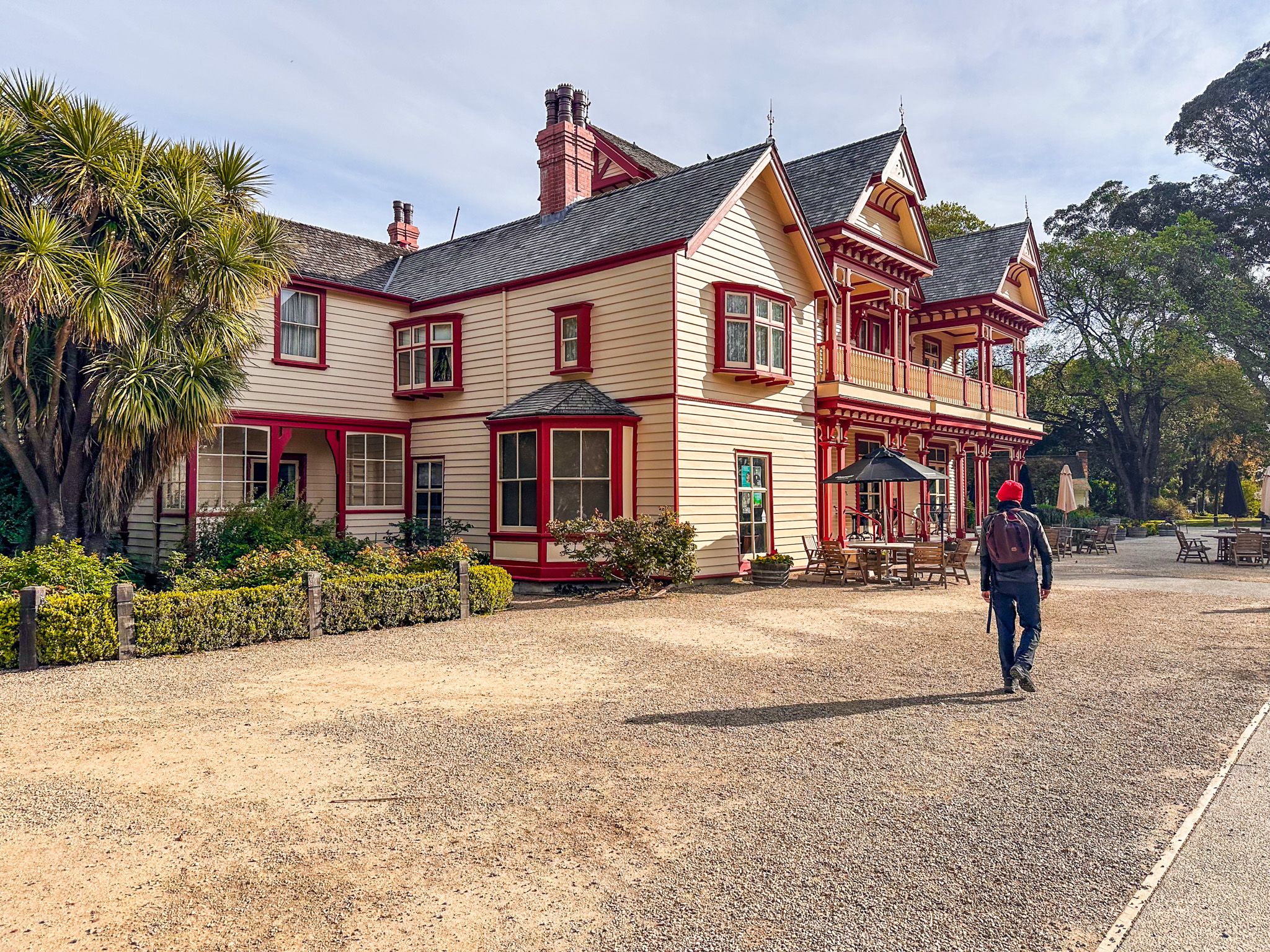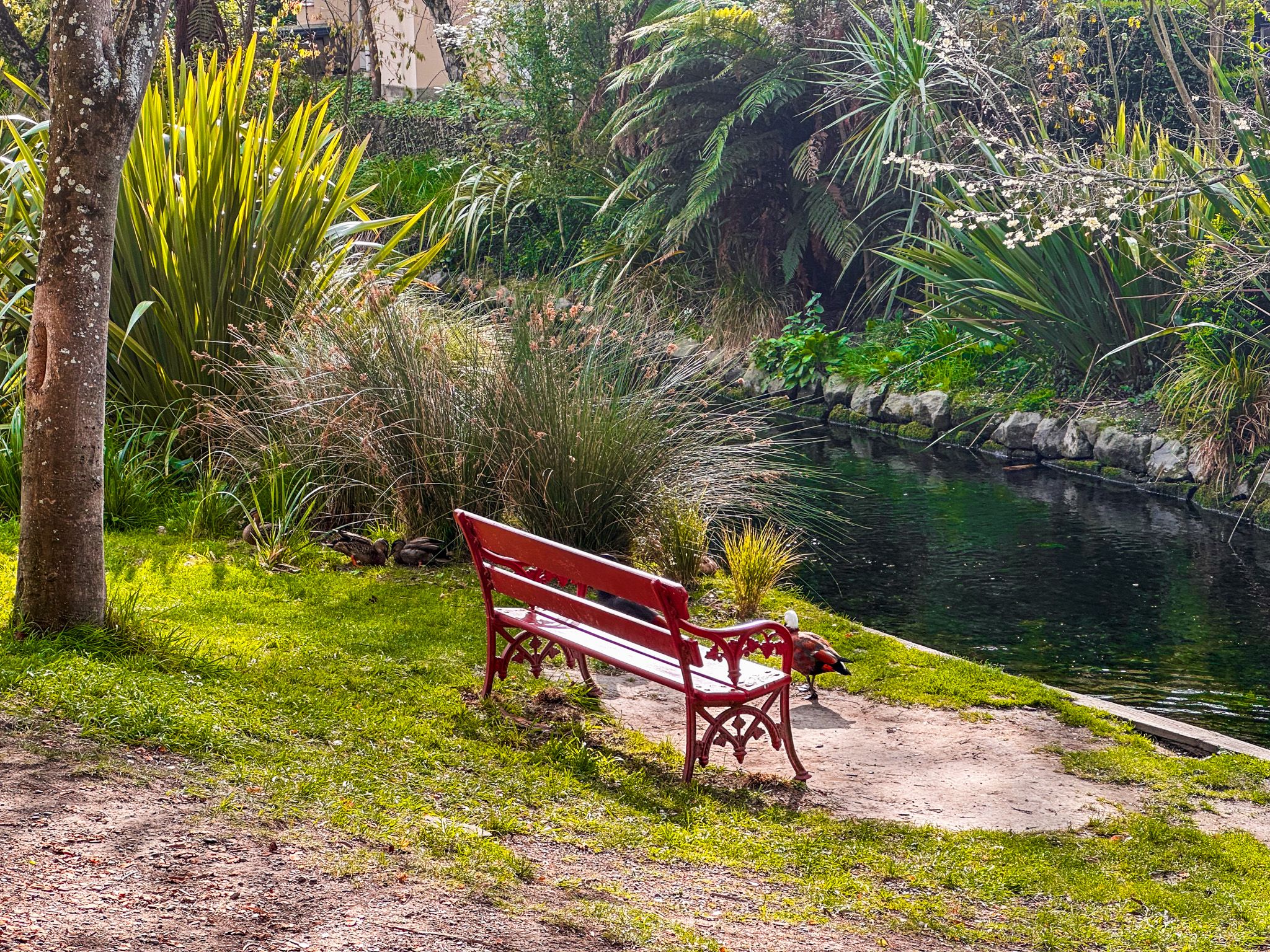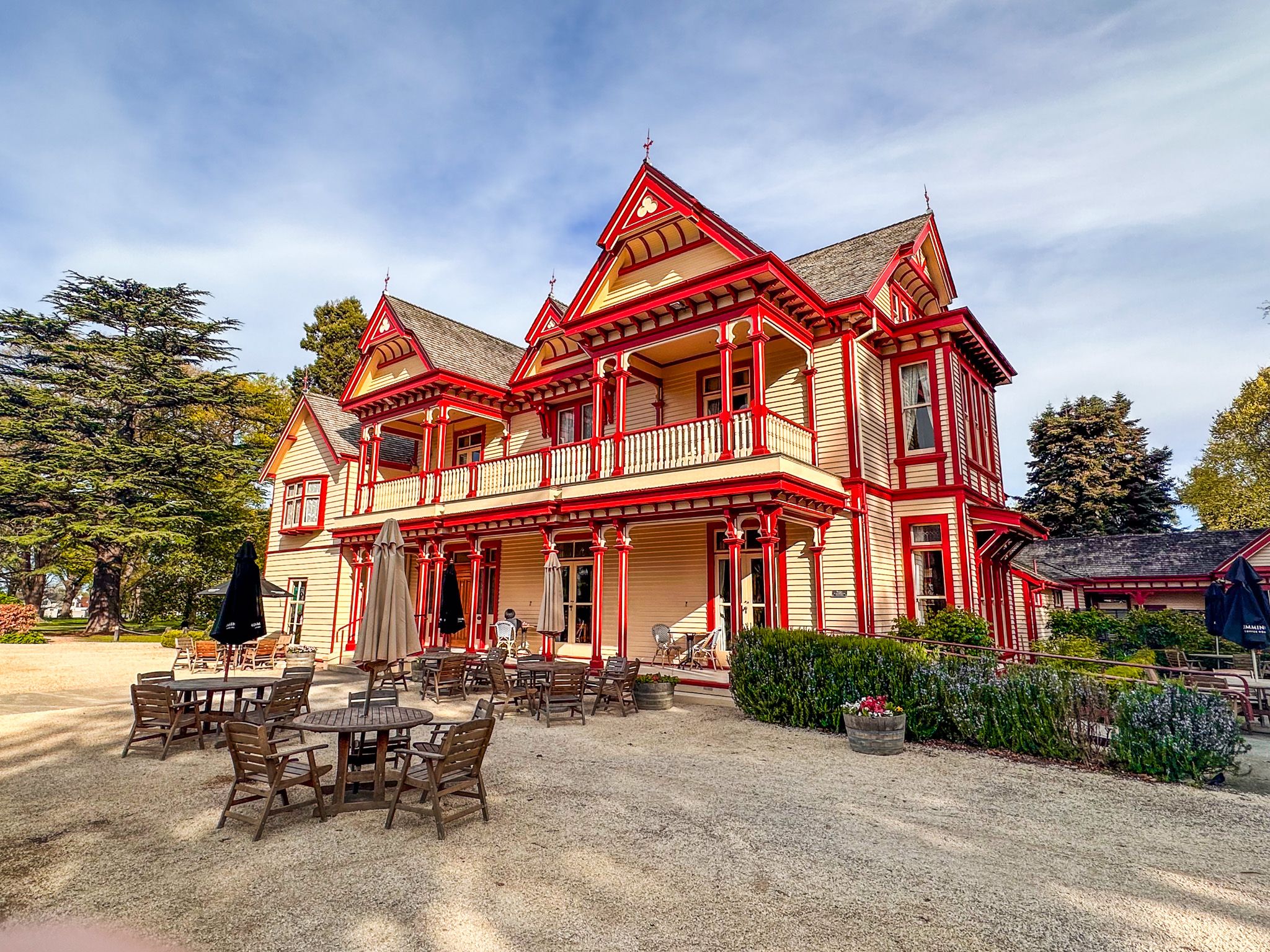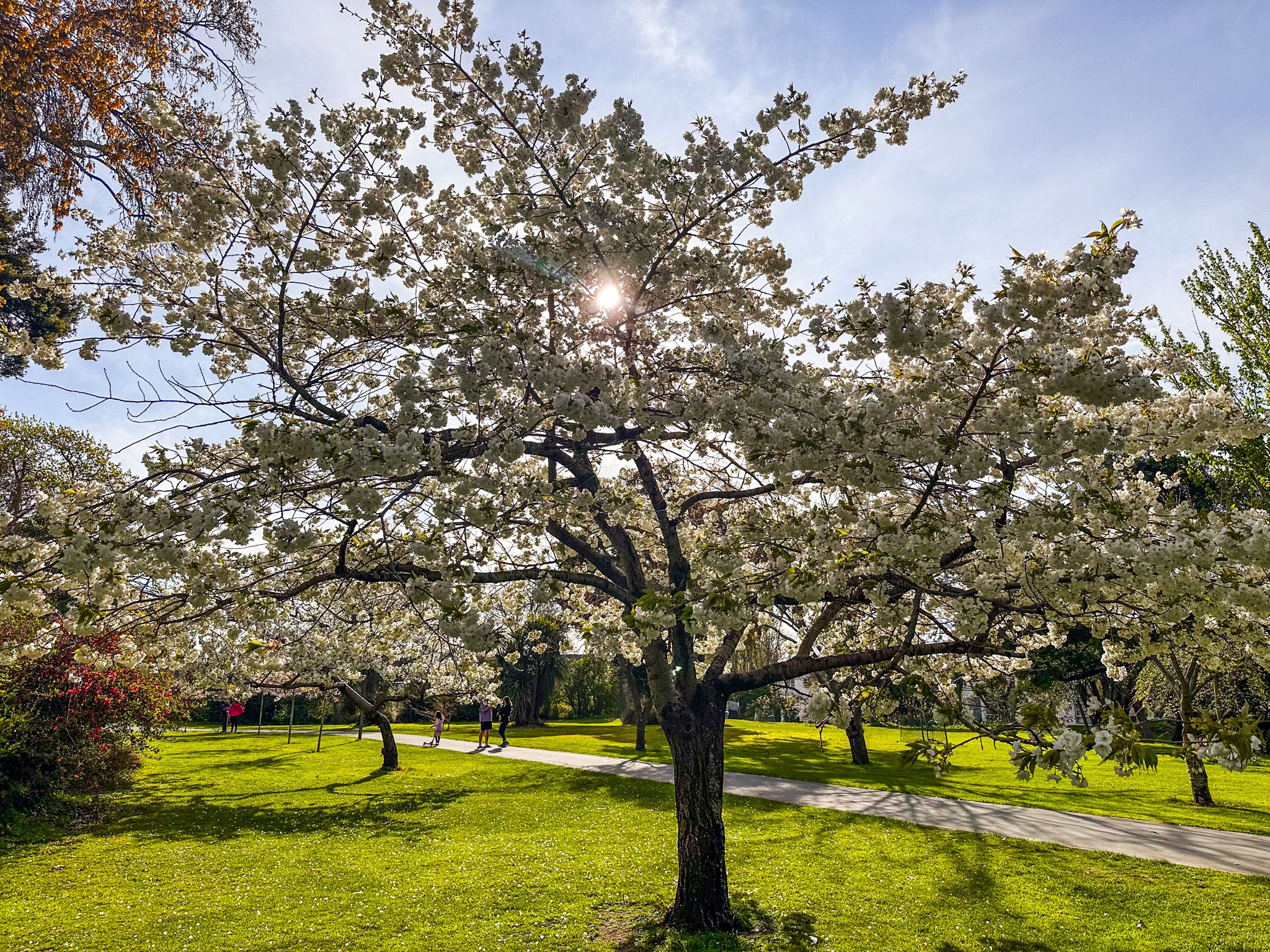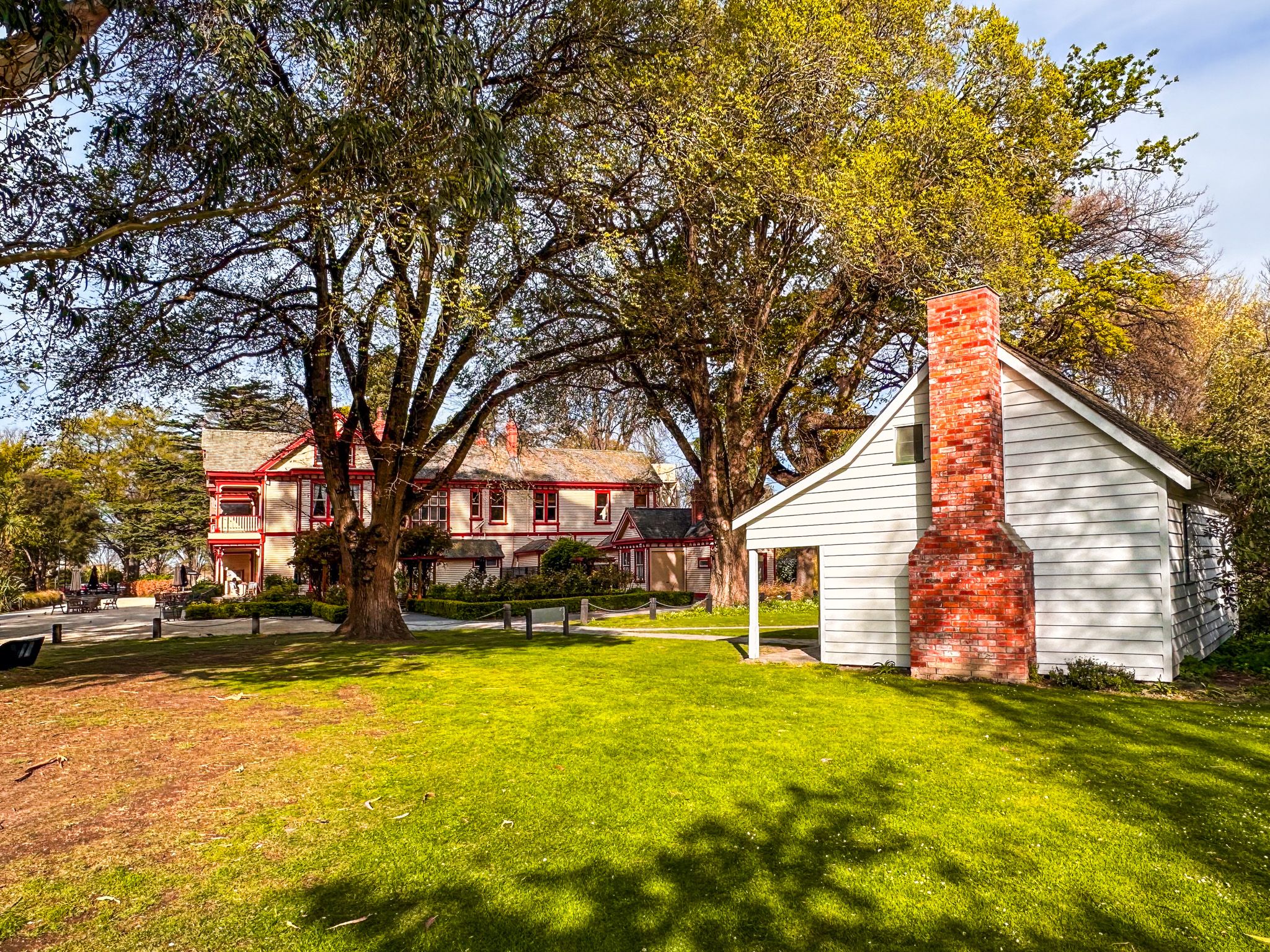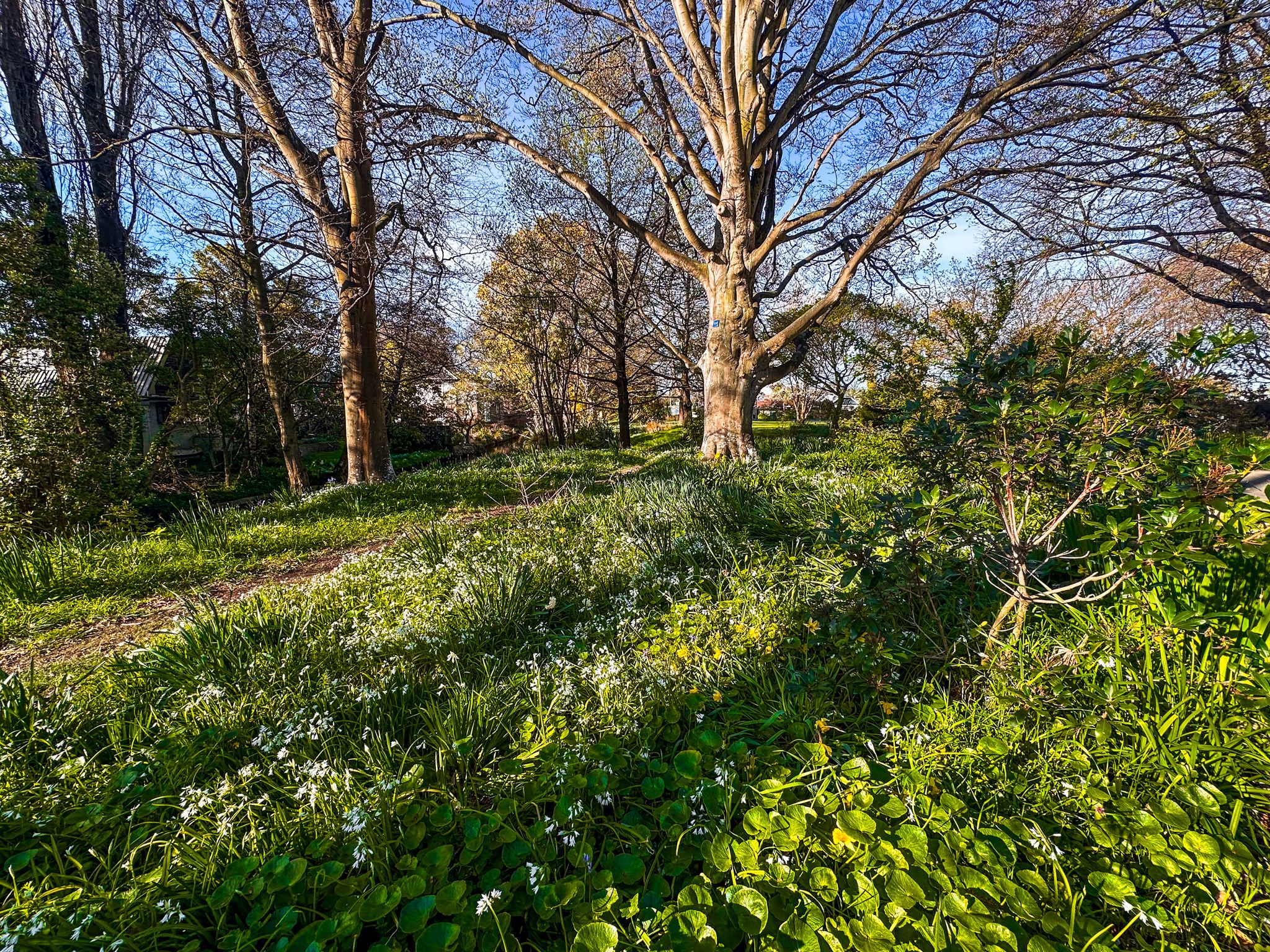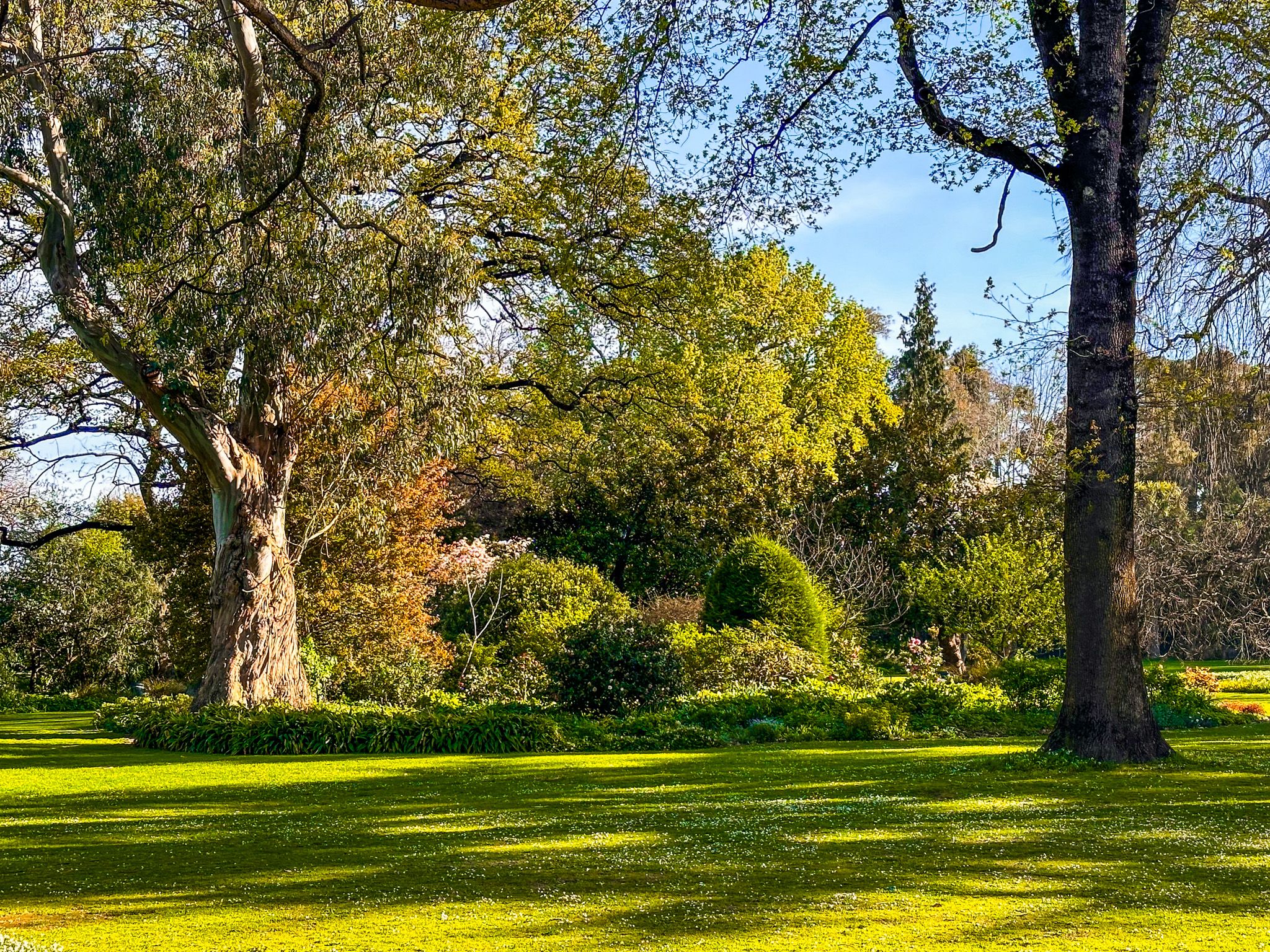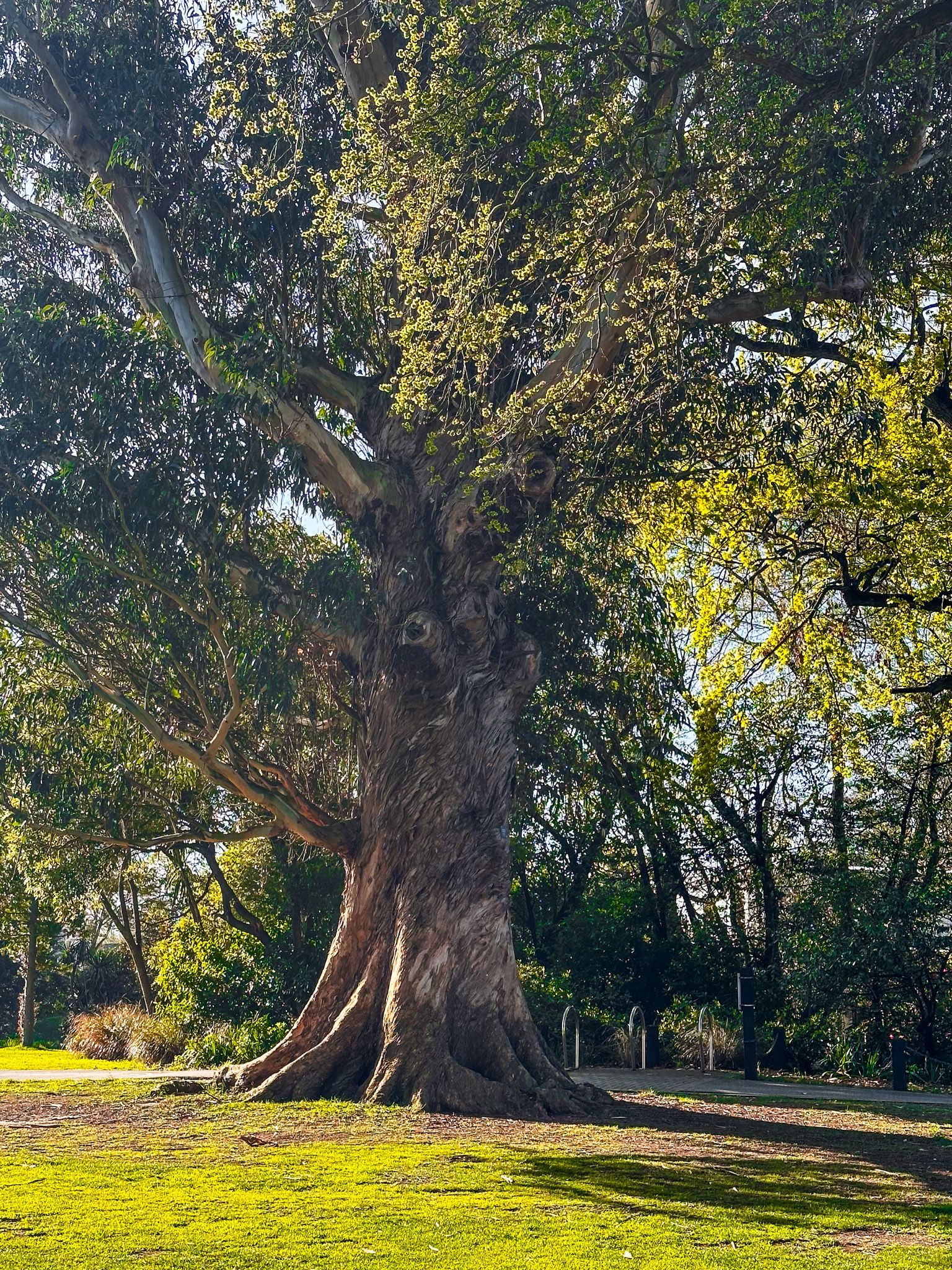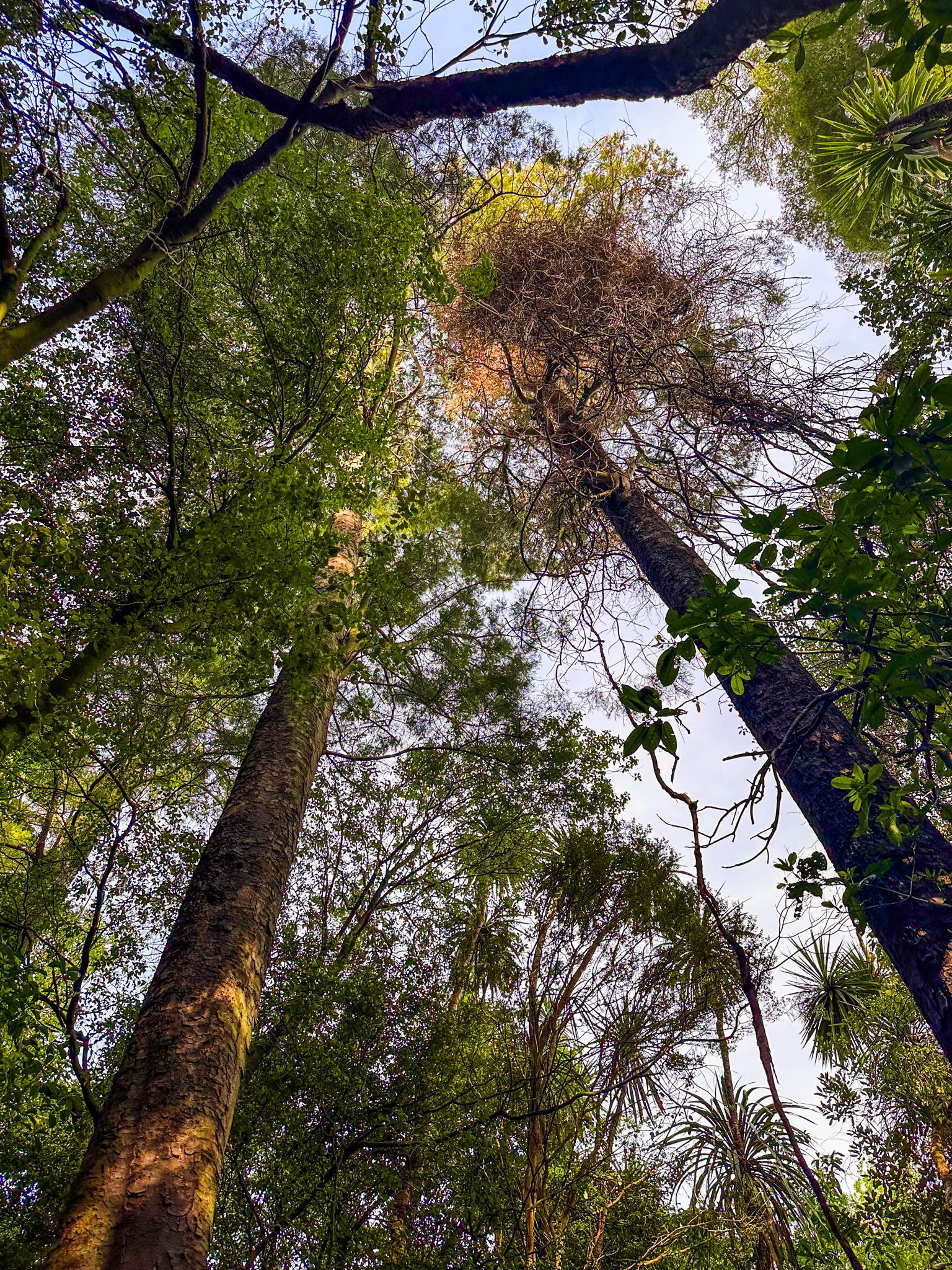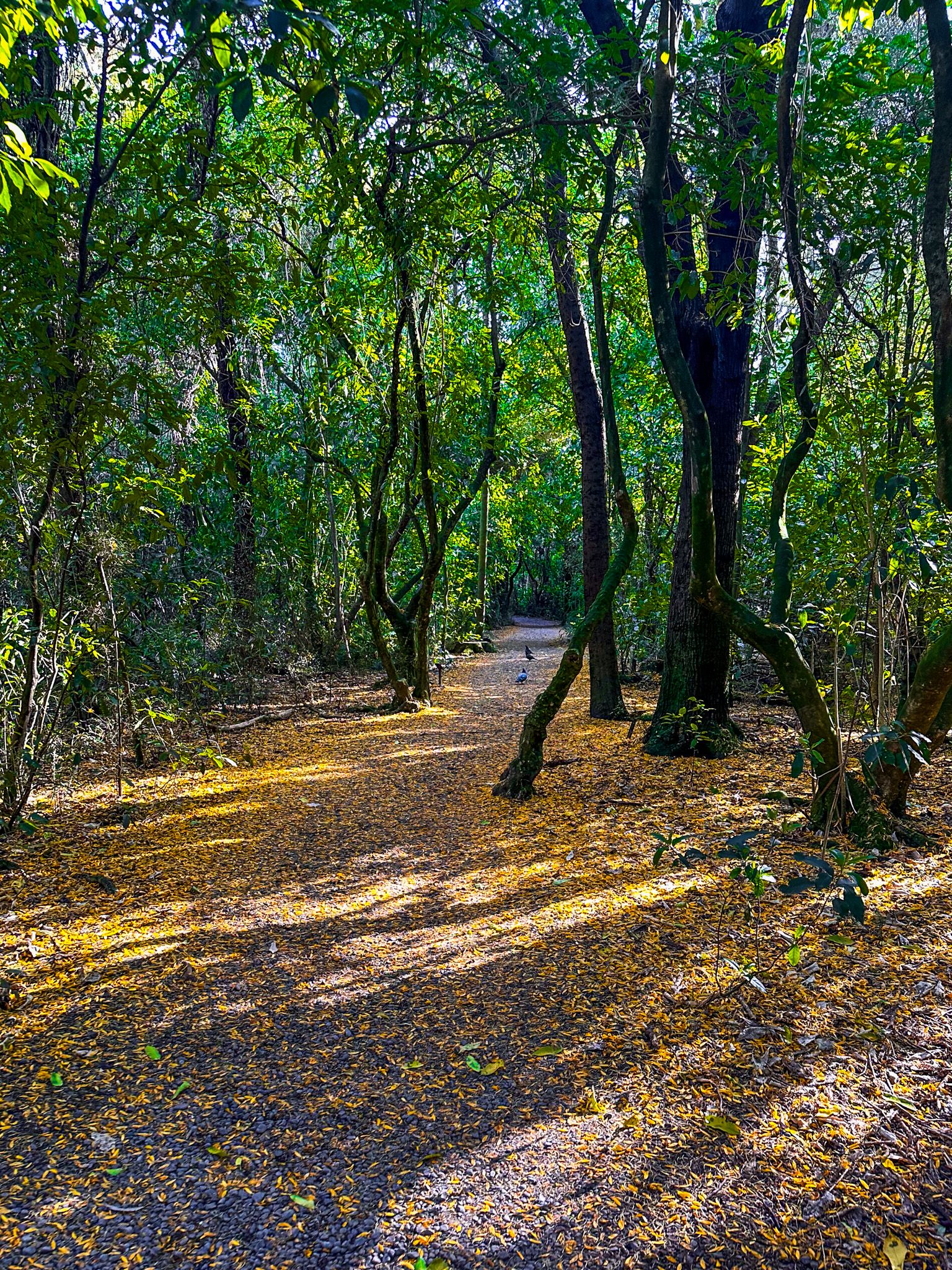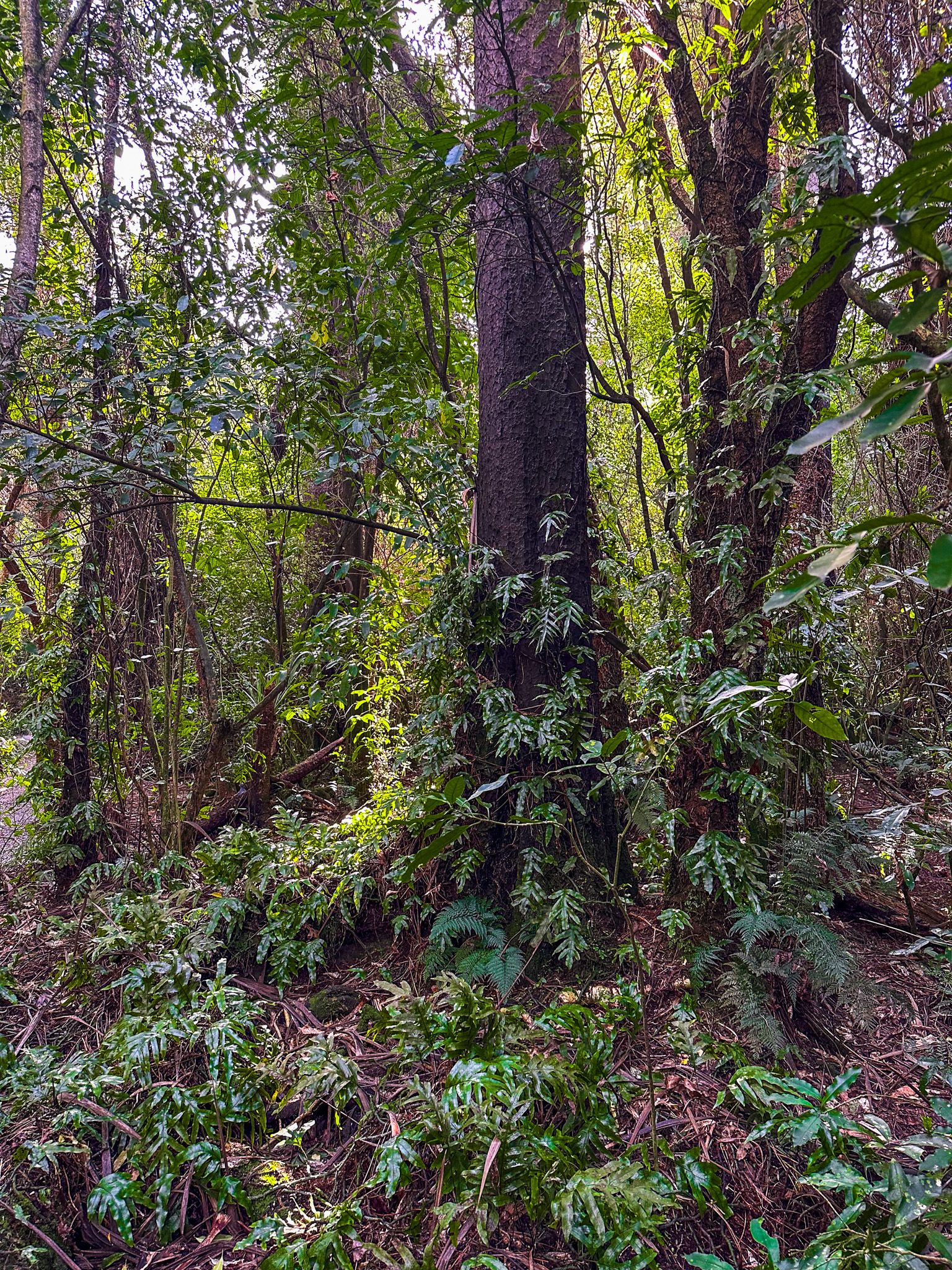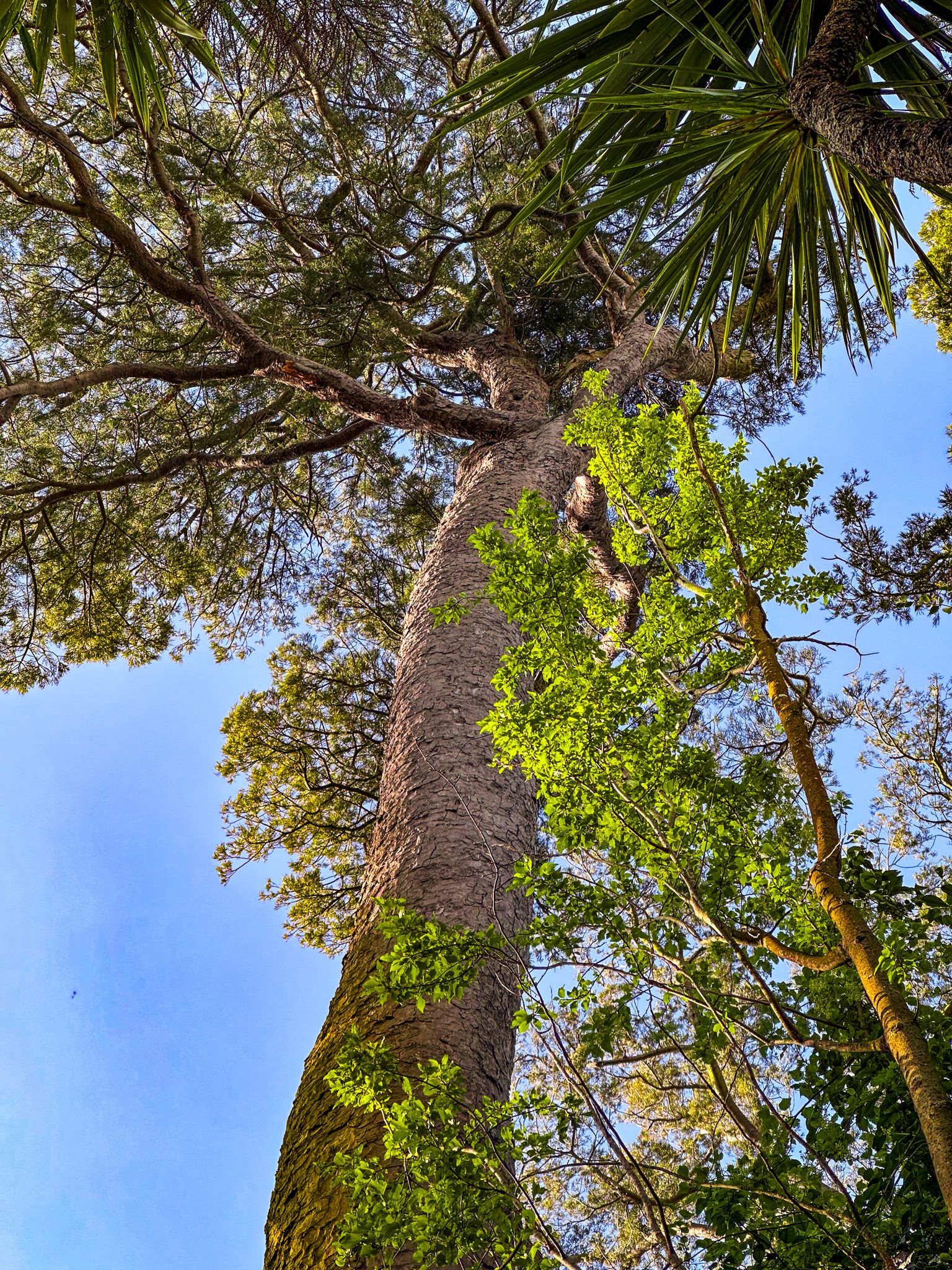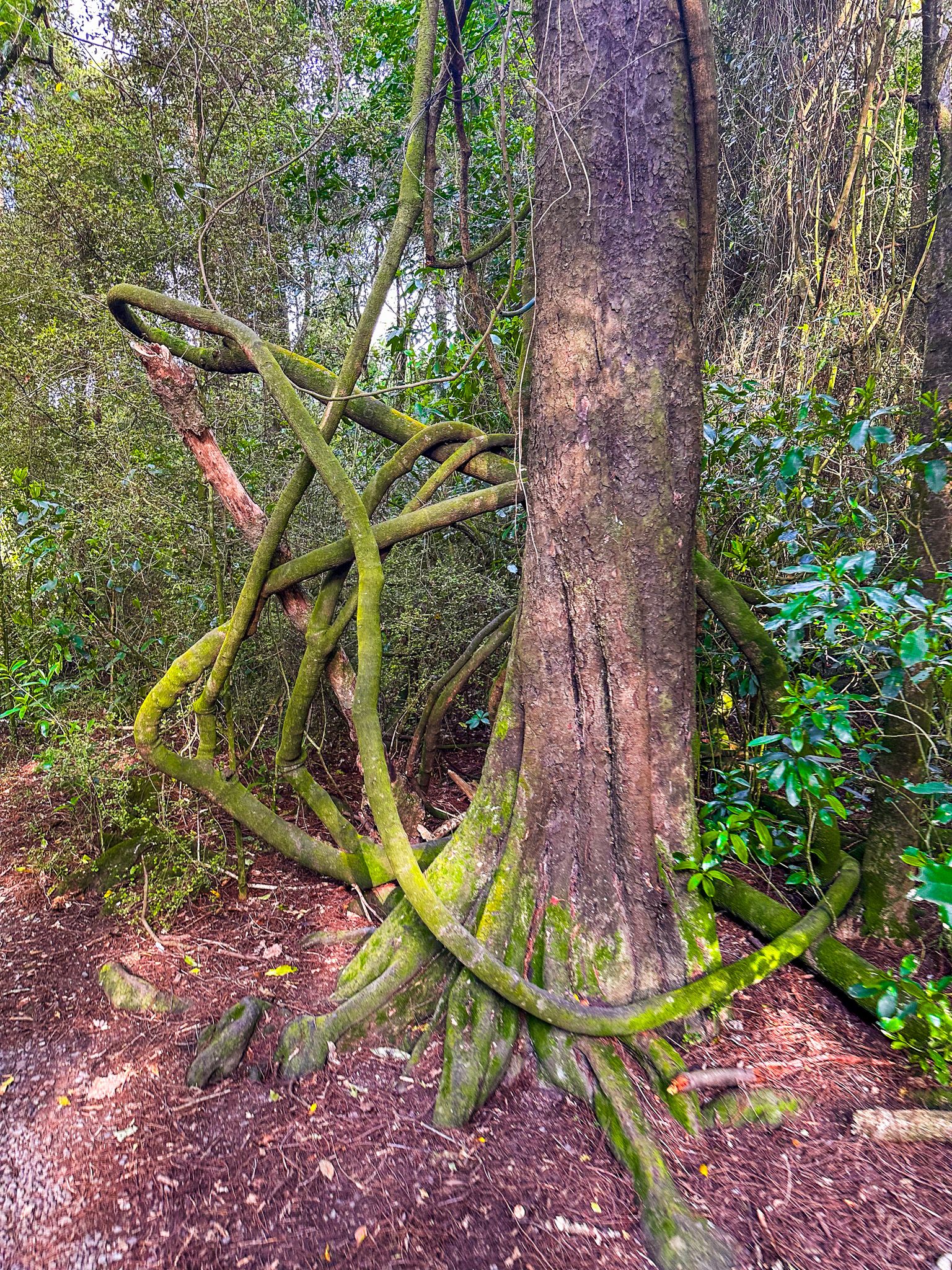In many ways, Riccarton Bush is a microcosm of Christchurch, combining early settler history with magnificent surroundings and gardens, a vast historic house, the Ilam Stream, and, uniquely for Christchurch, a remnant ancient forest.
The estate and forest are on the northern side of the suburb of Riccarton, with access on Ngaere Road from the east and west sides of the bush. The east side access is through a large woodland park-like area with numerous mature exotic trees and spring flowers, followed by Riccarton House, which sits in front of the access to the forest. Walking through the forest is within a predator-proof fence and takes about 40 minutes. The second half of the walk includes towering kahikatea trees, as good as any you will find in NZ. Once you are done, take time for a drink or meal at the house.
Riccarton Bush (Pūtaringamotu) is significant in the early European settlement of NZ. Pūtaringamotu, now the Christchurch suburb of Riccarton, was the first location settlers selected in the Christchurch area. The kahikatea forest distinguished it from the surrounding swampy area and was one of only four forest remnants on the Canterbury Plain. The name Pūtaringamotu means “the place of an echo” or “the severed ear”, suitable metaphors for an isolated forest remnant. The only other remnant in the Christchurch / Ōtautahi area, Papnanui, was cut down for firewood in the 1850s.
Several settlers arrived in Pūtaringamotu in 1840 to establish a farm but left in 1841. In the late 1840s, brothers William and John Deans from Scotland, after various adventures while seeking land to farm, also discovered Pūtaringamotu. They started as squatters, negotiated a lease with local Māori and established a farm. The Deans named Ōtākaro the Avon River, and Pūtaringamotu became Riccarton after places from their homeland.
Meanwhile, the NZ Company, then the Canterbury Association, started planning the future city. This benefited the Deans because the Canterbury Association acquired the region from Ngāi Tahu, resulting in their land holdings becoming freehold. As part of the dealings, the brothers signed an agreement with the NZ Company to protect 22 hectares of their kahikatea forest. In late 1850, the first four ships arrived, and the expansion of Christchurch began.
Having secured the future of their families, both Willian and John were tragically deceased by the mid-1850s. Jane Dean proved formidable and set about building the first stage of Riccarton House on the property in 1856. Two subsequent expansions by 1900 doubled its size and mixed Victorian and Edwardian styles. The estate shrunk as Christchurch expanded, and the house and remaining estate were purchased by Christchurch City in 1947. It was damaged during the earthquakes of the 2010s, but after repairs, it has operated as a restaurant, and there is a market on Saturdays.
In 1914, 6.4 hectares of the forest still existed, formally protected with the passing of the Riccarton Bush Act. Forests played a significant role in NZ entomology, and insects were studied and collected from 1859. Most NZ moths and butterflies can be found there, and at least one is unique to the forest. Much more recently, a predator-proof perimeter fence has been installed to reintroduce kiwi to the reserve.
Riccarton Bush is a short distance from Central Christchurch. Drive through or around Hagley Park to Deans Avenue. From Deans Avenue, head west on Kilmarnock Street, then continue straight ahead when you reach Kahu Road. You will see the Ngaere Road entrance on your left.
